mrsupraboy
Well-Known Member
Cube people cube. So much effort in trying to chill it down straight away. Home brew is easy ☺

there's 2 levels of protection on them, first is the reset switch for thermal protection. (as you've found, it's the little push button in the middle of the base) the second is a fusible link which is hard wired in underneath.Paulbroad said:I thought I’d share an interesting experience I had this morning, when the unit stopped working.
In the interests of getting started on the brew day early, I set the GF up with a timer on the power point, so that once I had the kids up and fed this morning my mash water would already be at strike temperature. When I went downstairs, the display was still showing 23 degrees.
I stuffed around with it for twenty minutes or so, trying to get it to work, but still no heat in the unit, even when I switched to boils and switched the button to alternate between the two elements. Needless to say i was starting to get a bit worried that on my third brew day with the GF something was broken.
A quick Google search revealed that there is a re-set switch on the bottom of the unit. I emptied the water out, hit the switch, and it started working immediately.
The unit performed perfectly throughout the brew, so no lingering effects, but thought it was something worth sharing.
Do you think it was the timer that might have caused the switch to trip?Paulbroad said:I thought I’d share an interesting experience I had this morning, when the unit stopped working.
In the interests of getting started on the brew day early, I set the GF up with a timer on the power point, so that once I had the kids up and fed this morning my mash water would already be at strike temperature. When I went downstairs, the display was still showing 23 degrees.
I stuffed around with it for twenty minutes or so, trying to get it to work, but still no heat in the unit, even when I switched to boils and switched the button to alternate between the two elements. Needless to say i was starting to get a bit worried that on my third brew day with the GF something was broken.
A quick Google search revealed that there is a re-set switch on the bottom of the unit. I emptied the water out, hit the switch, and it started working immediately.
The unit performed perfectly throughout the brew, so no lingering effects, but thought it was something worth sharing.
I thought that, but to be honest, I'm not sure. I've used the timer on other appliances without issue, so I would say not.carniebrew said:Do you think it was the timer that might have caused the switch to trip?
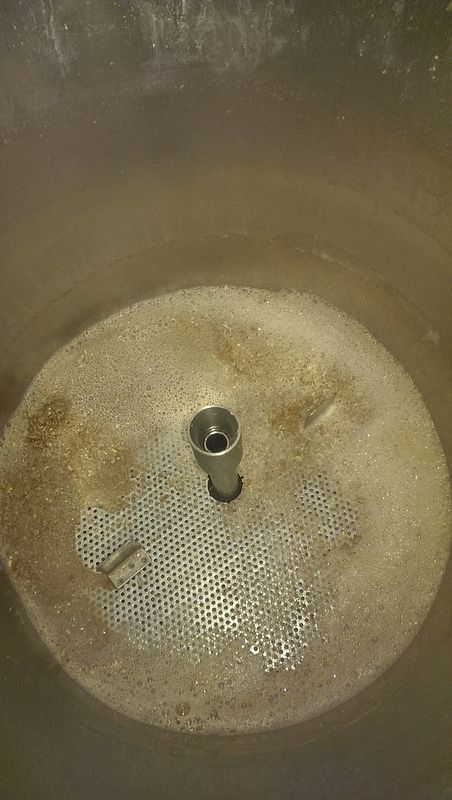
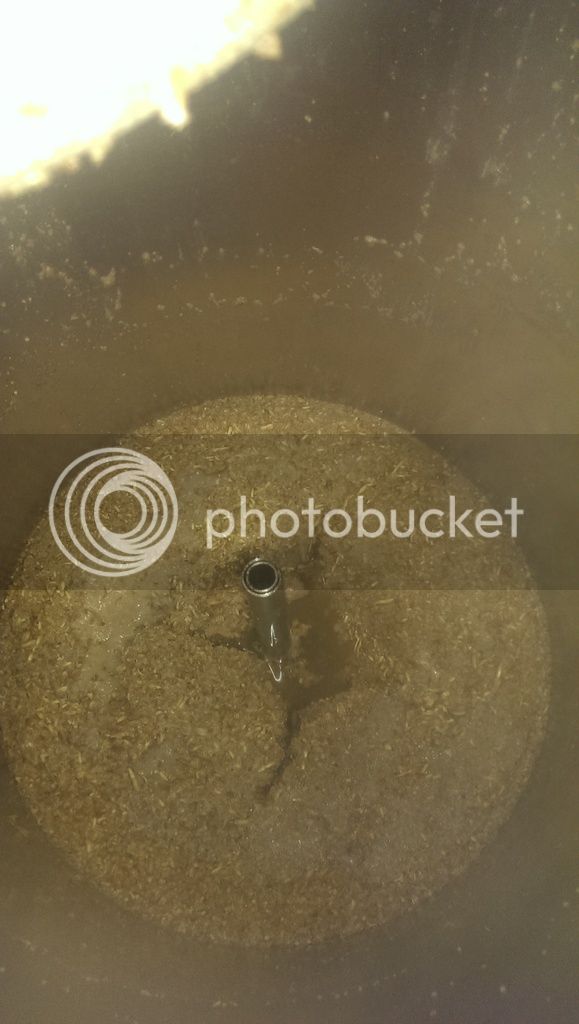
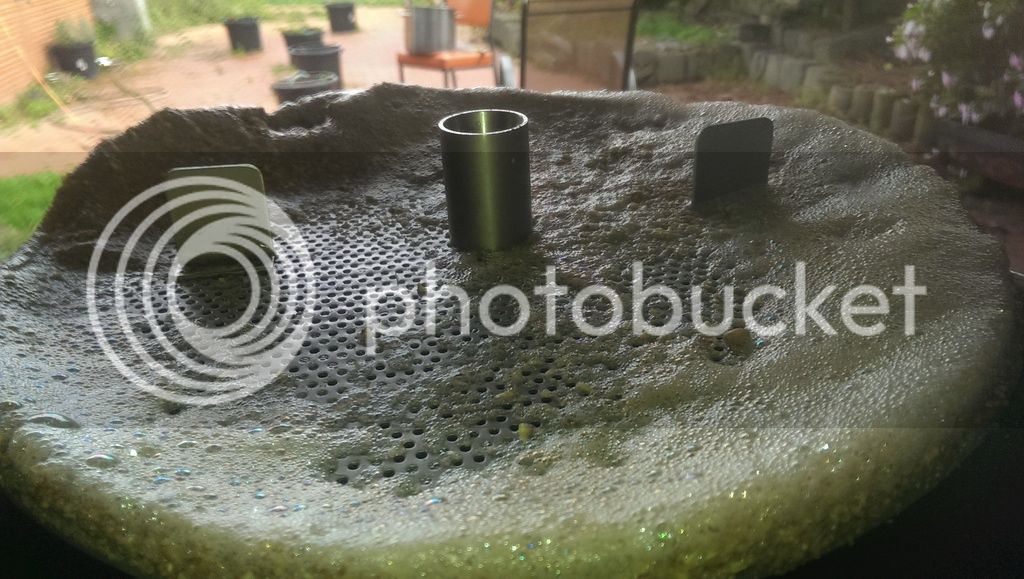
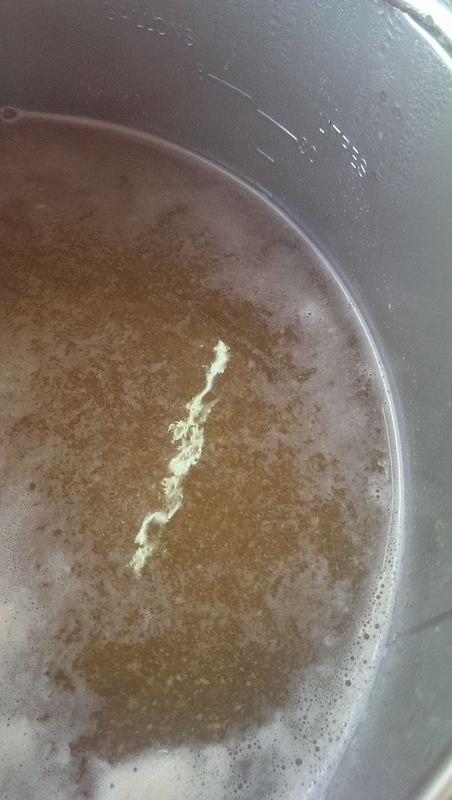
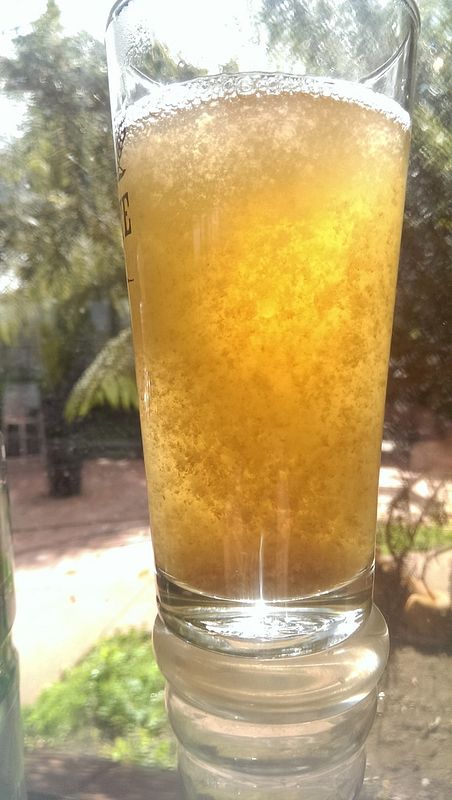
I regularly do brews of that size without issue. Are you pushing the top plate all the way down and compress mash? If so, I wouldn't (and don't). I just push it down until it touches the top of the mash (ie, don't submerge it) and away I go. I've never had this problem.slcmorro said:So I have some issues... attached are some photos from my Boulders and Tinder S&W Pacific Ale clone. Recipe calls for 4.7kg of grain.
I think my main problem is, with just 4.7kgs the top perforated plate sits too low. With bigger batches however it still sits relatively low. I mashed in with 18L, which could have been too much however I wouldn't have thought it'd still cause many problems. Not once during the recirc could I see the plate or even the top piece which sits on the overflow pipe however.
As you can see, I ended up with a lot of grain particles sitting on top of the plate after my 60 min mash, and a whole load in the wort which is currently boiling away now. The seal around the perforated plate is intact, and the bottom perforated plate sits almost flush (slight warp but the grain weight would sort that out) so other than grain escaping back through the overflow hole in the plate I'm at a loss to explain it. I've collected 250ml of wort during the start of the boil to show how much is in there.
I'll still ferment this brew and hopefully it doesn't turn out astringent as buggery.
Ideas?
Dunno then. I get a small amount of floaties during the mash, but such a small amount I could probably count them.slcmorro said:I didn't push it all the way down to the grainbed, however I did submerge it. The problem I speculate exists when the grain can come back up through the hole in the perforated plate. Technically though, I wouldn't think any grain particles could make it back into the wort being that it all drains back through the mash tun and the bottom perforated plate anyways - but obviously something is causing it.
Is this how you have the wort overflow pipe set during the mash?slcmorro said:I recently adjusted the crush of my mill due to my poorer efficiency in two previous brews (65-70%) and this is the first brew since. Could have something to do with it, but it's still coarser than my previous BIAB settings. Maybe 20% flour. Will try the positioning of the top plate as you suggested next time.

The overflow inlet part should fit snugly into that hole in the top plate, so that nothing floats/escapes through the hole.slcmorro said:I didn't push it all the way down to the grainbed, however I did submerge it. The problem I speculate exists when the grain can come back up through the hole in the perforated plate. Technically though, I wouldn't think any grain particles could make it back into the wort being that it all drains back through the mash tun and the bottom perforated plate anyways - but obviously something is causing it.
